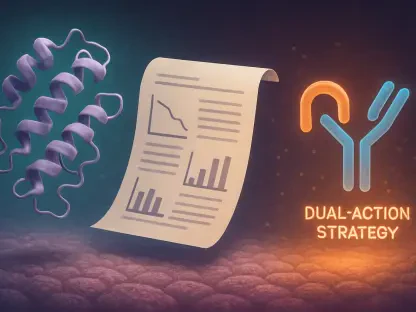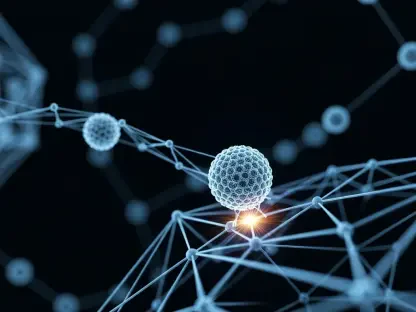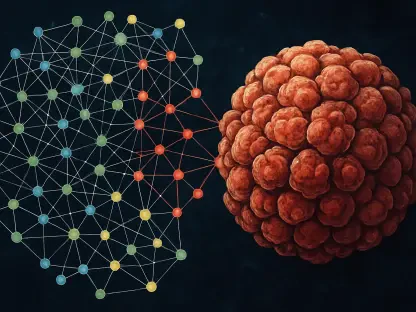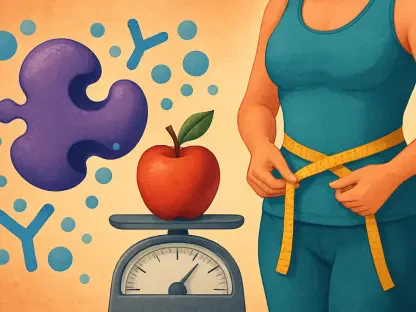Breast cancer remains the most diagnosed cancer among women worldwide, posing significant challenges in terms of early detection, treatment efficacy, and overcoming drug resistance. Among the numerous hurdles faced by patients and oncologists alike is the phenomenon of tamoxifen resistance. As a cornerstone of endocrine therapy for estrogen receptor-positive breast cancer, the effectiveness of tamoxifen can be compromised, leading to adverse outcomes. In pursuit of personalized medicine pathways and improved prognostic tools, researchers have turned their attention to utrophin (UTRN), a gene known for its tumor suppressor capabilities, to discern its potential to predict tamoxifen resistance. This article dives into the realm of biomarkers, exploring the possibility that UTRN could hold the key to unlocking a more tailored and effective breast cancer treatment protocol.
Unveiling UTRN: A Cancer Suppressor Gene
Utrophin (UTRN) serves as an intriguing subject within the cancer research domain for its role as a tumor suppressor gene. Previously implicated in various other malignancies, exploring how UTRN operates within breast cancer could provide valuable insights. Investigations reveal that UTRN, while abundantly expressed in healthy tissue, often sees diminished levels in breast cancer cases. Further, its presence or absence has been thought to correspond with patient outcomes, making it an auspicious candidate for in-depth study. By understanding the fine balance between normal cellular function and disease states governed by UTRN, scientists aim to decipher its impact on the progression and treatment responses in breast cancer.Intrinsic tumor-suppressing characteristics suggest a link between low UTRN expression and a heightened risk of malignancy. Counterintuitively, this same property could influence a tumor’s sensitivity to therapies such as tamoxifen. These intriguing dualities set the stage for a comprehensive examination of UTRN’s contribution to both the onset of breast cancer and the efficacy of intervention strategies.
Tamoxifen: A Cornerstone of Endocrine Therapy
Tamoxifen has long stood as a bulwark in the fight against estrogen receptor-positive breast cancer, blocking estrogen’s ability to fuel tumor growth. Despite its success, the eventual development of resistance to tamoxifen in a significant fraction of patients marks a substantial clinical concern. Unraveling the mechanisms that underpin tamoxifen resistance is critical to enhancing future therapeutic approaches.This segment of the article highlights Tamoxifen’s role in the treatment landscape of breast cancer and scrutinizes the challenging reality of drug resistance. Elaborating on the complexities of breast cancer treatment, the conversation inevitably turns to the pivotal question: Could the predictability of tamoxifen responsiveness lie within the genetic blueprint of the tumor? The investigation into UTRN serves as a testament to the tenacity of researchers pursuing a deeper understanding of this resistance.
The Search for Biomarkers: UTRN’s Diagnostic Potential
The necessity for biomarkers that can signal the development of tamoxifen resistance has spurred a thorough investigation into the diagnostic potential of UTRN. High-throughput data from repositories such as The Cancer Genome Atlas (TCGA) and the Gene Expression Omnibus (GEO) provide a fertile ground for researchers seeking patterns in UTRN expression. The consensus emerging from a range of studies is indicative of an inverse relationship between UTRN levels and poor prognosis in breast cancer patients.Delving into statistics and survival curves, the discussion advances the narrative that UTRN expression could be marshaled as a prognostic tool. An optimistic prognosis aligns with higher UTRN levels, framing the gene not only as a benchmark for anticipating disease persistence but also as a beacon for therapeutic strategizing.
Bridging Bioinformatics and Clinical Insights
The integration of bioinformatics with clinical research is shining a spotlight on UTRN’s role in breast cancer. Notably, UTRN levels are significantly lower in breast cancer tissues compared to healthy ones, and this decrease is closely associated with a reduced effectiveness of tamoxifen therapy. By combining biostatistical methods, drug sensitivity tests, and quantitative PCR, researchers have been able to provide robust evidence connecting UTRN expression levels to the success of tamoxifen treatment. These revelations suggest that UTRN could serve as a valuable biomarker, enabling healthcare professionals to better predict treatment outcomes and tailor therapies to individual patients. This burgeoning evidence positions UTRN as a potential key player in the personalized medicine arena, offering new insights into treatment resistance and paving the way for more effective breast cancer management strategies.
Understanding UTRN’s Influence on Cellular Behavior
Diving into the molecular mechanisms, in vitro experiments underscore the crucial role of UTRN in modulating drug sensitivity. Here, RT-qPCR assays and gene set enrichment analyses provide empirical support, advancing the hypothesis that UTRN influences the response to tamoxifen therapy. Results from these experiments are telling—UTRN knockdown in hormone receptor-positive breast cancer cell lines precipitates a marked decrease in tamoxifen sensitivity.This section underscores the pivotal function that laboratory studies play in corroborating bioinformatics predictions about UTRN’s role in tamoxifen resistance. The solidity of these findings fortifies the notion that UTRN’s alteration within cancer cells could be a harbinger of therapeutic outcomes, a detail that could revolutionize treatment paradigms.
The Tumor Immune Microenvironment and UTRN
UTRN’s relationship with the tumor immune microenvironment stands at the frontier of cancer research, given the TME’s profound effect on treatment success. Utilizing algorithms such as CIBERSORT, researchers assess the proportions of various immune cells within the TME and their association with UTRN expression. The discovery of UTRN’s association with specific immune populations like macrophages, dendritic cells, and T cells lends credence to its possible immunomodulatory role.This portion of the article delves into the intricacies of how UTRN expression might sculpt the immune milieu within the TME, aligning with therapeutic responsiveness. The insights from these analyses have the potential to reshape our understanding of breast cancer pathogenesis and lead to more effective combinatorial treatment strategies.
Elucidating ceRNA Networks: A Molecular Jigsaw
The intricate web of ceRNA networks, encompassing miRNAs and lncRNAs, represents a molecular jigsaw whose assembly could illuminate the pathways of tamoxifen resistance. Pinpointing the miRNAs that target UTRN has enabled researchers to map out the networks where UTRN may counterbalance or augment tamoxifen sensitivity. This foray into the molecular dynamics at play presents a layered picture of UTRN as a possible linchpin in these networks.In deciphering the complex relationships between UTRN, miRNAs, and lncRNAs within the ceRNA paradigm, the article blends the subtleties of genetic regulation with their broader implications for therapy resistance. Understanding these networks paves the way for the development of novel, targeted interventions that could mitigate the onset of resistance and improve patient care.









